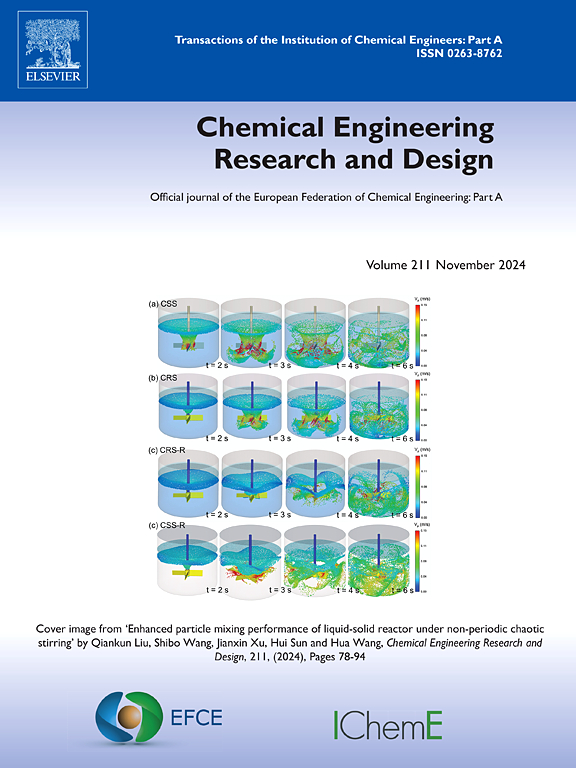Recent trends in physio-chemo technologies and their role in dyes removal: Effectiveness, benefits, and limitations
IF 3.7
3区 工程技术
Q2 ENGINEERING, CHEMICAL
引用次数: 0
Abstract
Industrial wastewater dyes removal is important to decrease environmental pollution and protect public health. The efficiency, benefits, and challenges of major physical and chemical techniques used for dye removal are discussed in this review. Yet physical methods such as the adsorption of dyes through activated carbon, polymers, or nanomaterials have demonstrated good dyes capture from wastewater because of their simplicity and versatility in dealing with various dye types and dye concentrations. However, these are potent methods, but they depend upon frequent regeneration or replacement of adsorbent materials. Advanced oxidation processes and chemical approaches chemically degrade dye molecules into less harmful by-products. The high efficacy of breaking down these dyes was shown using methods such as ozonation, Fenton's reagent, and photocatalysis even at low concentrations. However, these technologies often have higher operational costs and require careful handling of reagents and waste products. Decisions to select an optimal dye removal strategy are conditioned by dye properties, concentration, treatment objectives, and cost factors. This review may help readers to choose the most suitable method for dyes removal.
物理化学技术的最新趋势及其在染料去除中的作用:有效性、益处和局限性
工业废水染料脱除对减少环境污染、保护公众健康具有重要意义。本文综述了用于染料去除的主要物理和化学技术的效率、优点和挑战。然而,物理方法,如通过活性炭、聚合物或纳米材料吸附染料,已经证明了从废水中捕获染料的良好方法,因为它们简单且多功能性,可以处理各种染料类型和染料浓度。然而,这些都是有效的方法,但它们依赖于经常再生或更换吸附剂材料。高级氧化过程和化学方法将染料分子化学降解成危害较小的副产物。使用臭氧化、芬顿试剂和光催化等方法,即使在低浓度下,也能有效地分解这些染料。然而,这些技术通常具有较高的操作成本,并且需要小心处理试剂和废物。选择最佳染料去除策略的决定取决于染料性质、浓度、处理目标和成本因素。这篇综述可以帮助读者选择最合适的去除染料的方法。
本文章由计算机程序翻译,如有差异,请以英文原文为准。
求助全文
约1分钟内获得全文
求助全文
来源期刊

Chemical Engineering Research & Design
工程技术-工程:化工
CiteScore
6.10
自引率
7.70%
发文量
623
审稿时长
42 days
期刊介绍:
ChERD aims to be the principal international journal for publication of high quality, original papers in chemical engineering.
Papers showing how research results can be used in chemical engineering design, and accounts of experimental or theoretical research work bringing new perspectives to established principles, highlighting unsolved problems or indicating directions for future research, are particularly welcome. Contributions that deal with new developments in plant or processes and that can be given quantitative expression are encouraged. The journal is especially interested in papers that extend the boundaries of traditional chemical engineering.
 求助内容:
求助内容: 应助结果提醒方式:
应助结果提醒方式:


